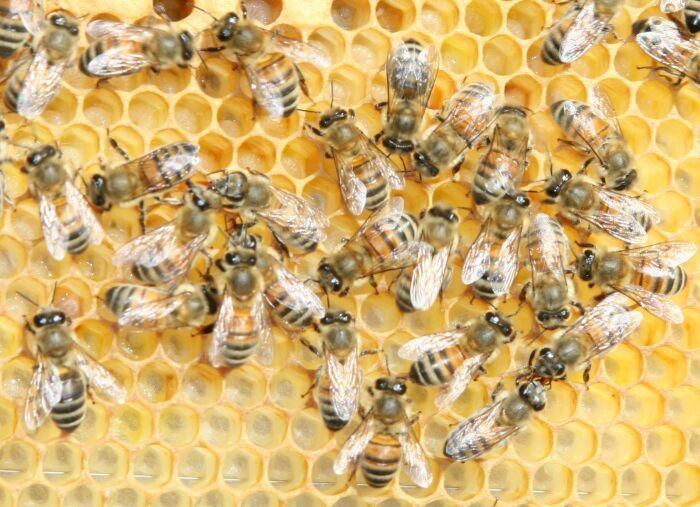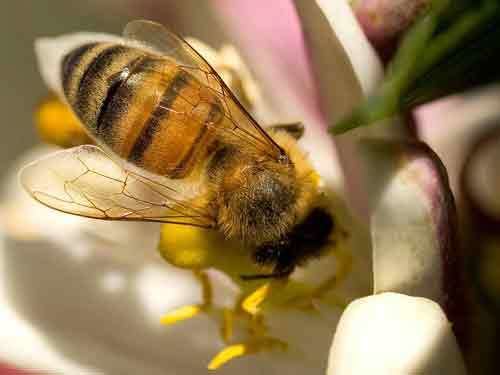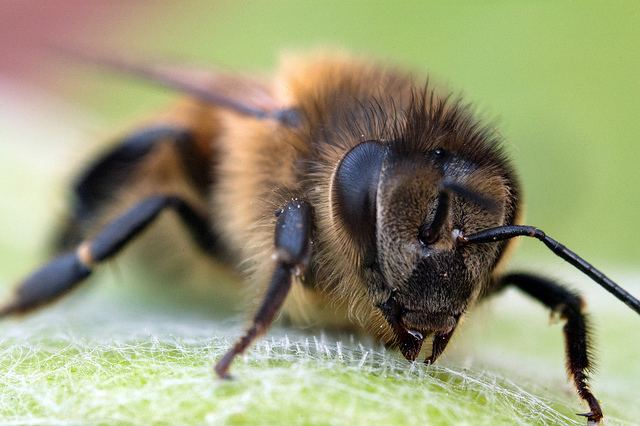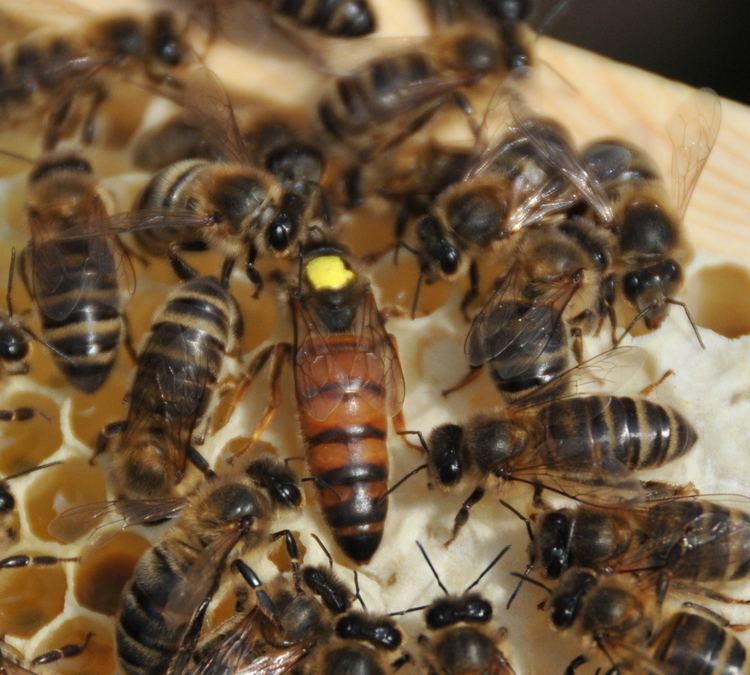Genus Apis Scientific name Apis mellifera Rank Hybrid | Species A. mellifera - hybrid | |
 | ||
Similar Carniolan honey bee, Bee, Honey bee, Western honey bee, Italian bee | ||
The Buckfast bee is a strain of honey bee. It is a man-made bee race, a cross of many strains of bees, developed by "Brother Adam", (born Karl Kehrle on 3 August 1898 in Germany), who was in charge of beekeeping at Buckfast Abbey in the United Kingdom, where the bees are still bred today. Most of the breeding work in Europe is done by breeders belonging to the breeders association Gemeinschaft der Europäischen Buckfastimker. This organisation is maintaining a pedigree for Buckfast bees, originating from Brother Adam's years.
Contents
- Sunny day for buckfast bees apis donau buckfast breeding isolated station
- Origin
- Heritage
- History
- Buckfast breeding program
- Primary
- Secondary
- Tertiary
- Strengths
- Weaknesses
- References

Sunny day for buckfast bees apis donau buckfast breeding isolated station
Origin

In the early 20th century, bee populations were being decimated by tracheal mites. This condition, later called "acarine" disease, after the acarine parasitic mite that invaded the bees' tracheal tubes and shortened their lives, was killing off thousands of colonies in the British Isles.

In 1916, only 16 surviving colonies were left in the abbey. All of them were either pure Ligurian (Italian) or of Ligurian origin, hybrids between Ligurian and the English black bee A. m. mellifera. Brother Adam also imported some more Italian queens. From these he began to develop what would come to be known as the Buckfast bee.
Heritage

The Buckfast contains heritage from mainly A. m. ligustica (North Italian), A. m. mellifera (English), A. m. mellifera (French), A. m. anatolica (Turkish) and A. m. cecropia (Greek). The Buckfast bee of today also contains heritage from two rare and docile African stocks A. m. sahariensis and the A. m. monticola, but not the "Africanized" A. m. scutellata. "
History

Brother Adam was inspired about the survival of the Italian × black bee crosses. To be able to control the matings, he started to use the isolated valley of Dartmoor. With no other bees within range, Brother Adam could maintain their genetic integrity and develop desirable traits. Brother Adam investigated various honey bee races and made many long journeys in Europe, Africa, and the Middle East, searching for pure races and interesting local stocks. The book In Search of the Best Strains of Bee tells about his travels in search of genetic building blocks. Brother Adam imported more bees to cross with his developing Buckfast bee.

Every new bee strain or bee race was first crossed with the existing Buckfast bee. In most cases, the new desired qualities were passed on to the new generation and the new combination was then made stable with further breeding work. Every crossing with a new race took about 10 years before the desired genes were fixed in the strain. Over 70 years, Brother Adam managed to develop a vigorous, healthy, and fecund honey bee which he dubbed the Buckfast bee.
The Buckfast bee is popular among beekeepers and is available from bee breeders in Germany, Ireland, the United Kingdom, France and other places. Most of the Buckfast bee's qualities are very favorable. They are extremely gentle and highly productive. Brother Adam, in his book, Beekeeping at Buckfast Abbey, writes that in 1920, they obtained "an average of no less than 192 lbs surplus per colony and individual yields exceeding 3 cwt [approx. 336 lbs]." In the 1986 BBC-affiliated documentary, The Monk and the Honey Bee, more than 400 pounds of honey are reported to have been produced by a single Buckfast colony. According to Brother Adam, "The average annual honey yield over the last thirty years has been 30 kg (66 lb) per colony. Thus we have a favourable balance compared with the average production in America or in Europe."
The stock has been imported into the United States (eggs, semen, and adult queens via Canada) and they are easily available.
Buckfast breeding program
The qualities and characteristics desired in Brother Adam's breeding can be divided into three groups: primary, secondary, and tertiary, those that have bearing on management.
Primary
Primary qualities are those qualities essential for any maximum honey production.
